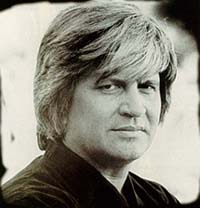| This could be you! |
|
|
| Retire Quickly |
Here you will find some history of some of the "key" Masters and their contribution to the development of Ed Parker's American Kenpo Karate. This information is incomplete, comes from various sources and is in no way meant to be considered as "gospel".
Please feel free to E-Mail me with and additional information you would like considered for addition.
Choki Motobu (1871-1944)
Motobu was an eccentric Okinawan Karate master. He is responsible for secretly translating the Ch'uan Fa elements of Okinawan Shorin-Ryu ("Shaolin Way") into the current basic structure now known as Shorei-Ryu Karate.
Choki Motobu is associated with the rise of Kempo in Hawaii because of a publicized visit in 1933 as well as a mysterious link with James Mitose and the development of modern Kosho-Ryu Kempo .
Dr. James Mitose (1915-1981)
Mitose is a great grand master of Hawaiian/U.S. Kempo, and we can trace part of our lineage to him. At the age of 5, Mitose was sent to Japan to study the Mitose family tradition of Ch'uan Fa (or "Kempo" in Japanese) at the Mt. Akenkai Kosho-Shorei temple. As stated previously, the Ch'uan Fa tradition had already been modified by successive Mitose masters until it became known as Kosho-Shorei Kempo (Old Pine Tree Style).
After fifteen years of training in his family's temple in Japan, Mitose returned to Hawaii. Following World War II, he opened the Official Self-Defense Club to begin teaching his family's wartime art of Kosho-Ryu Kempo to the general public. During the next fifteen years of teaching, Grand Master Mitose awarded black belts to only six of his students: Giro Nakamura, Thomas Young, Paul Yamaguchi, Arthur Keawe, Edward Lowe and William K.S. Chow .
William K.S. Chow (1914-1987)
Before studying under Grand Master Mitose, Master Chow had studied Boxing, Wrestling, Jujitsu and Karate. However, his main course of martial arts training was Chinese Shaolin Ch'uan Fa under the guidance of his father (Hoon Chow).
Hoon Chow was a Buddhist Priest from Shanghai, China. Just prior to the Chinese Boxer Rebellion, Hoon Chow immigrated to Hawaii for a safer and more prosperous lifestyle. While living in Hawaii, Hoon Chow continued to practice the Shaolin Ch'uan Fa of Southeastern China (Kwangtung and Fukien).
This is the style he taught his son, William K.S. Chow. Master William Chow incorporated many of the things his father had taught him into what he would be the first to call "Kenpo" (Fist Law) Karate.
William K.S. Chow, a short man (approx. 5'1"), was raised in an Hawaiian culture where size, strength, and streetfighting ability were highly regarded. In order to survive on an island of giants, Master Chow began to alter Shaolin Ch'uan Fa to make it faster, more powerful, and oriented around streetfighting situations.
Master Chow began the transformation by shortening the circular motions and flowing movements of Shaolin Ch'uan Fa. He continued by incorporating the linear movements, joint locks and takedowns learned in boxing, karate and jujitsu. Finally, he placed a major emphasis on the availability and targeting of vital parts of the human anatomy [Master Sam Kuoho, Interview].
William K.S. Chow's Hawaiian Kenpo system (Kara-Ho Kenpo) was unusual for the time because it incorporated other martial arts techniques; Mitose had never associated his Kosho-Ryu Kempo with any other system. One of the most famous students under Chow's tutelage was Ed Parker.
Ed Parker (1931-1990)
Ed Parker, a native of Hawaii and student of Master Chow, revised the traditional methods of coping with modern fighting situations and brought the art to mainland U.S.A.
Master Parker developed the modern Kenpo style by analyzing combative predicaments from the viewpoints of the attacker, the defender, and the bystander or spectator. Through his observations, Master Parker disproved many theories and concepts that had previously been considered as combat effective.
Ed Parker systemized and categorized all the basic Kenpo elements into a logical order of progress for step-by-step instruction. Master Parker placed the Kenpo basics into eight categories: stances, blocks, parries, punches, strikes, finger techniques, kicks, and foot maneuvers.
Master Parker also divided the Kenpo system into three major divisions: basics (including forms), self-defense techniques, and sparring (tournament and street). This innovative restructuring made the martial arts much easier to learn, understand, and master.
American Kenpo Karate Club Mail Box Please visit this site sponser

|
